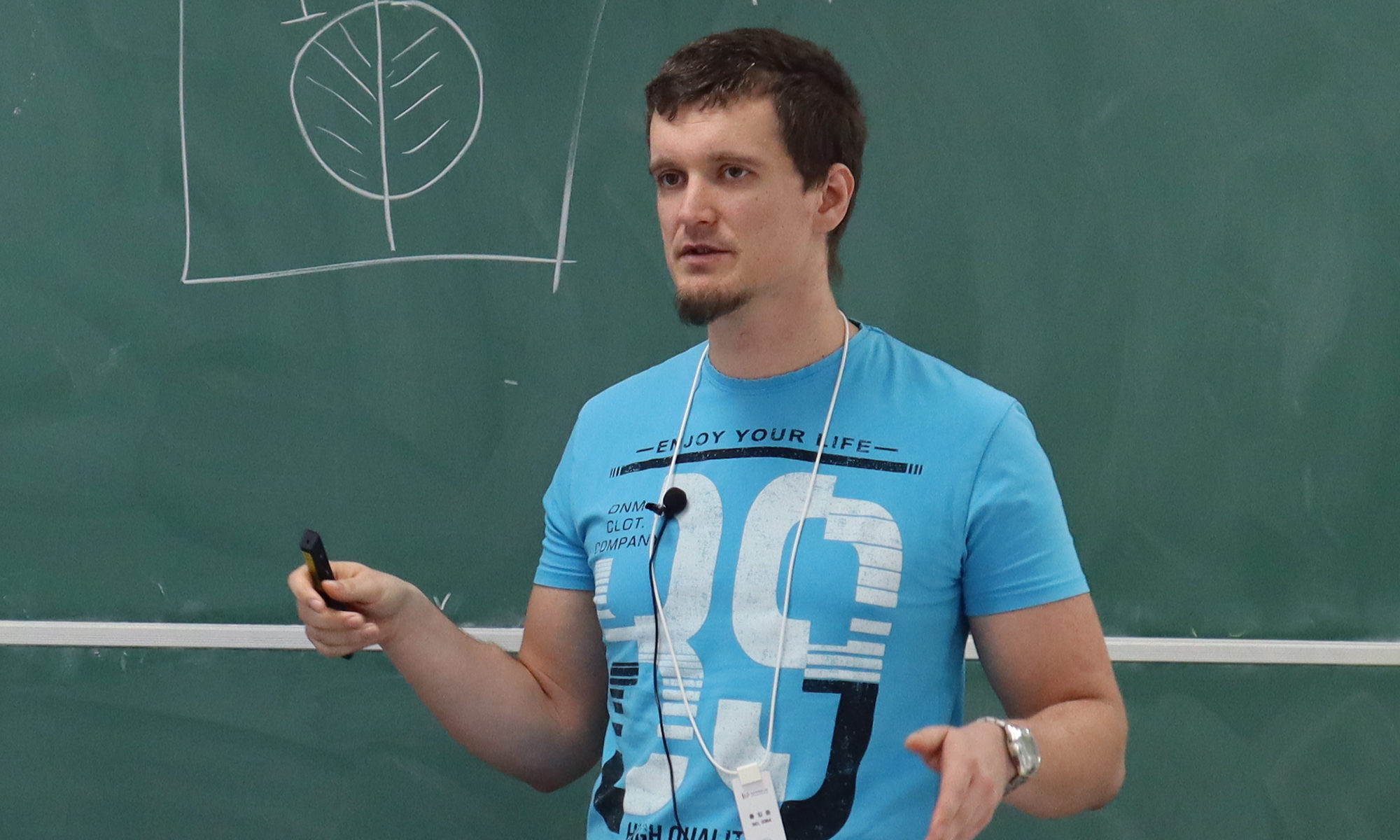On June 30, 2021, Florian Gut and Attila Joó (University of Hamburg) gave an online talk at the Virtual Discrete Math Colloquium on their new result proving that every rooted directed graph of size $\aleph_1$ has a large vertex flame. The title of their talk was “Large vertex-flames in uncountable digraphs“.
Florian Gut and Attila Joó, Large vertex-flames in uncountable digraphs
The local connectivity $ \kappa_D(r,v) $ from $ r $ to $ v $ is defined to be the maximal number of internally disjoint $r\rightarrow v $ paths in $ D $. A spanning subdigraph $ L $ of $ D $ with $ \kappa_L(r,v)=\kappa_D(r,v) $ for every $ v\in V-r $ must have at least $ \sum_{v\in V-r}\kappa_D(r,v) $ edges. It was shown by Lovász that, maybe surprisingly, this lower bound is sharp for every finite digraph. The optimality of an $ L $ can be captured by the following characterization: For every $ v\in V-r $ there is a system $ \mathcal{P}_v $ of internally disjoint $ r\rightarrow v $ paths in $ L $ covering all the ingoing edges of $ v $ in $ L $ such that one can choose from each $ P\in \mathcal{P}_v $ either an edge or an internal vertex in such a way that the resulting set meets every $ r\rightarrow v $ path of $ D $. We prove that every digraph of size at most $ \aleph_1 $ admits such a spanning subdigraph $ L $. The question if this remains true for larger digraphs remains open.
Attila Joó gave a talk on the partition of a set into bases of finitary matroids and cofinitary matroids at the discrete math seminar
On December 19, 2019, Attila Joó from University of Hamburg presented a talk on the partitioning of the ground set into bases of finitary and cofinitary matroids at the discrete math seminar. The title of his talk was “Base partition for finitary-cofinitary matroid families“.
Attila Joó, Base partition for finitary-cofinitary matroid families
Let ${\mathcal{M} = (M_i \colon i\in K)}$ be a finite or infinite family consisting of finitary and cofinitary matroids on a common ground set $E$.
We prove the following Cantor-Bernstein-type result: if $E$ can be covered by sets ${(B_i \colon i\in K)}$ which are bases in the corresponding matroids and there are also pairwise disjoint bases of the matroids $M_i$ then $E$ can be partitioned into bases with respect to $\mathcal{M}$.



